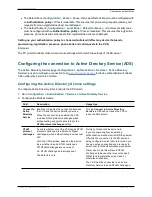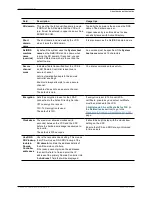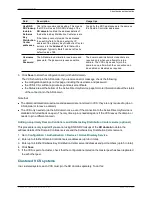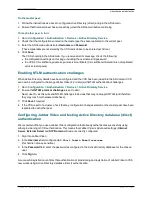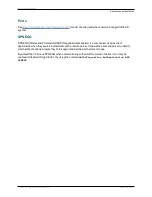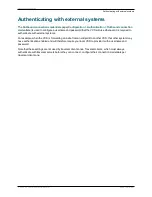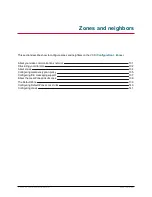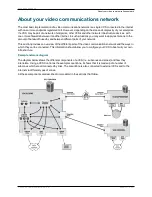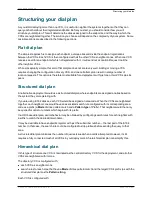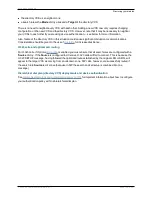
About the Local Zone and subzones
The collection of all endpoints, gateways, MCUs and Content Servers registered with the VCS makes up its
Local Zone
.
The Local Zone is divided into
subzones
. These include an automatically created
Default Subzone
and up
to 1000 manually configurable subzones.
When an endpoint registers with the VCS it is allocated to an appropriate subzone based on subzone
membership rules. These rules specify the range of IP addresses or alias pattern matches for each subzone.
If an endpoint’s IP address or alias does not match any of the membership rules, it is assigned to the Default
Subzone.
The Local Zone may be independent of network topology, and may comprise multiple network segments. The
VCS also has two special types of subzones:
n
the
Traversal Subzone
, which is always present
n
the
Cluster Subzone
, which is always present but only used when your VCS is part of a cluster
Bandwidth management
The Local Zone’s subzones are used for bandwidth management. After you have set up your subzones you
can apply bandwidth limits to:
n
individual calls between two endpoints within the subzone
n
individual calls between an endpoint within the subzone and another endpoint outside of the subzone
n
the total of calls to or from endpoints within the subzone
For full details of how to create and configure subzones, and apply bandwidth limitations to subzones
including the Default Subzone and Traversal Subzone, see the
Bandwidth control
section.
Registration, authentication and media encryption policies
In addition to bandwidth management, subzones are also used to control the VCS's registration,
authentication and media encryption policies.
See
Configuring subzones [p.225]
for more information about how to configure these settings.
Local Zone searches
One of the functions of the VCS is to route a call received from a locally registered endpoint or external zone
to its appropriate destination. Calls are routed based on the address or alias of the destination endpoint.
The VCS searches for a destination endpoint in its Local Zone and its configured external zones. You can
prioritize the order in which these zones are searched, and filter the search requests sent to each zone,
based on the address or alias being searched for. This allows you to reduce the potential number of search
requests sent to the Local Zone and out to external zones, and speed up the search process.
For further information about how to configure search rules for the Local Zone, see the
Configuring search
and zone transform rules
section.
Cisco VCS Administrator Guide (X8.1.1)
Page 138 of 507
Zones and neighbors
About the Local Zone and subzones

